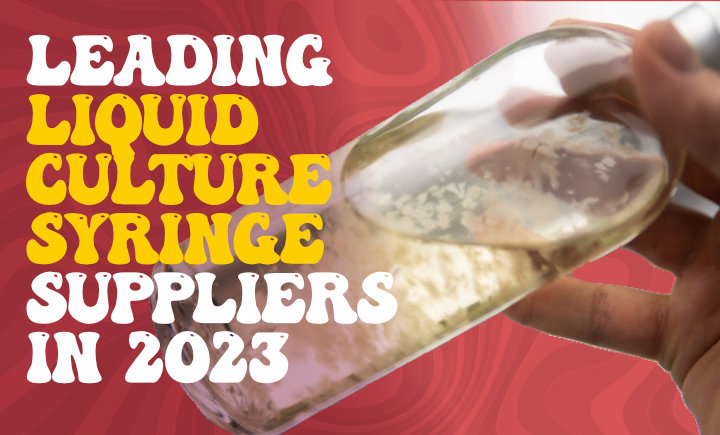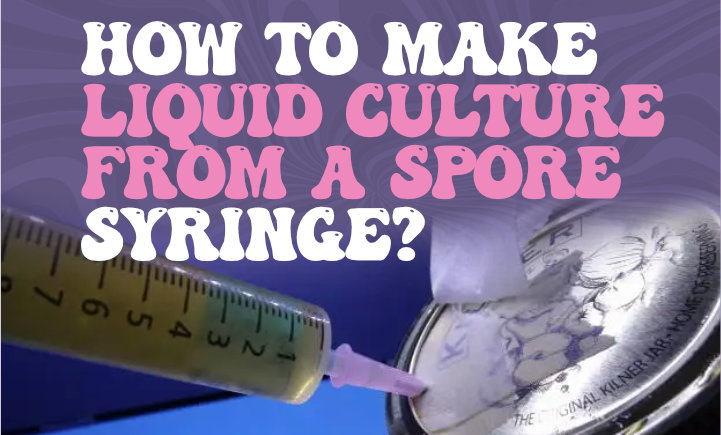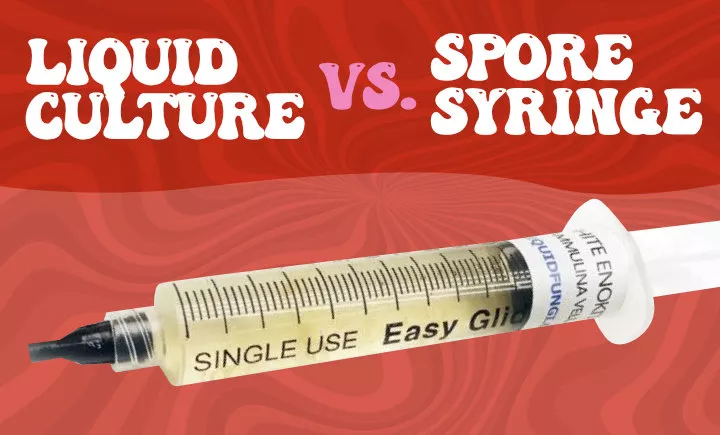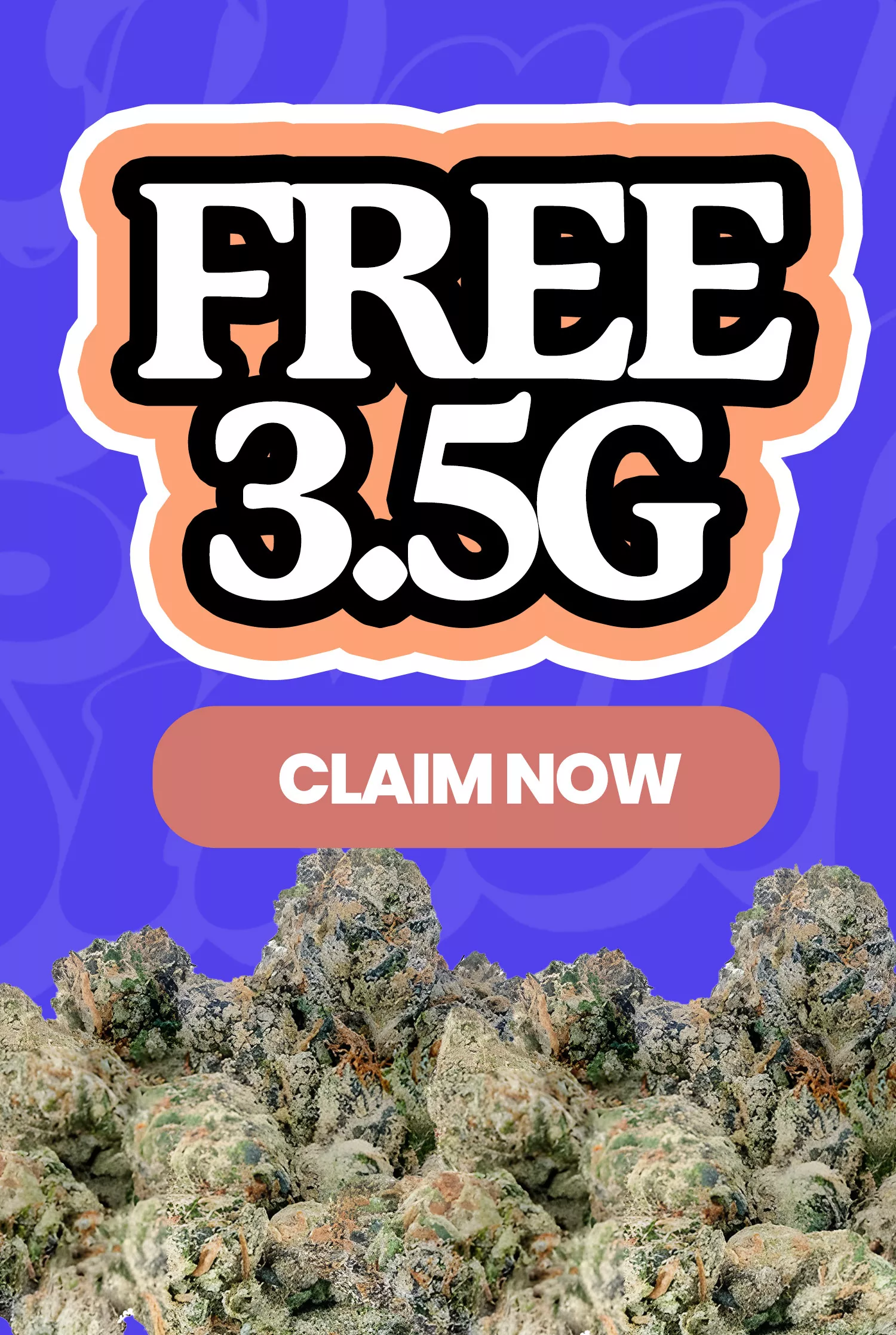Leading Liquid Culture Syringe Suppliers In 2023
- Magic Mushrooms
-
Jul 25
- Share post

In mycology, there’s an essential tool we can’t overlook – the liquid culture syringe. This ingenious tool allows you to cultivate and grow various types of mushrooms from spores in a controlled environment. With a rich nutrient base within the syringe, it provides a perfect condition for the mushroom spores to germinate and thrive.
It’s no wonder then, that finding reliable suppliers of high-quality liquid culture syringes is crucial for both amateur and professional mycologists.
It’s 2023, and we’ve seen significant advancements in this field. Emerging technologies have given rise to innovative techniques in mushroom cultivation. The market is filled with numerous suppliers claiming to offer superior quality products, but separating the wheat from the chaff isn’t always easy.
Here, we will guide you through some of the leading liquid culture syringe suppliers this year – those who provide top-notch products consistently whilst also pushing boundaries with their technological advancement.
What is Liquid Culture Syringe?
What’s a liquid culture syringe, you may ask? It’s essentially a tool that contains a mycelium solution, and it’s the key to cultivating your own fungi with more efficiency and less risk of contamination.
In the field of mycology, using a mushroom liquid culture syringe is a popular method for inoculation because it offers several advantages. For starters, it significantly reduces the risk of contamination by maintaining sterility throughout the process.
The concept behind a liquid culture syringe is rather simple but ingenious. The syringe contains a sterile nutrient-rich solution in which fungal mycelium – the vegetative part of fungus consisting of hyphae – has been allowed to grow. When injected into sterilized grain or substrate through an injection port, this solution provides an instant source of active mycelium, effectively jump-starting the colonization process. Because this technique bypasses the need for spore germination (which can take days), it speeds up overall cultivation time.
Notably, each type of liquid culture syringe caters to different kinds of mushrooms. Choosing an appropriate type based on your cultivation needs further enhances productivity.
Moreover, these devices are typically user-friendly, even if you’re not well-versed in mycology techniques, making them fantastic tools for beginners and experienced cultivators alike who wish to optimize their yield and maintain high-quality crop production without worrying about potential contaminations disrupting their work.

How to Make a Spore Syringe?
You’ll be surprised how simple it is to make your own spore syringe at home. For starters, you’ll need a few basic items, including a sterile mushroom spore print, a 10-12ml syringe with needle, distilled water, and an alcohol lamp or butane lighter for sterilization purposes.
You will also need an empty jar with a lid, ideally one that’s been sterilized. The process begins by heating the end of the syringe needle until it glows red hot using the flame from your alcohol lamp or lighter. Once heated, let it cool in open air without touching anything else to prevent contamination.
Next up is preparing your water. Fill your sterilized jar full of distilled water and place it into a pressure cooker for 30 minutes at 15 PSI (pounds per square inch) to ensure sterility. After this process is complete and the water has cooled to room temperature, draw up around 10ml into your now cool syringe.
With careful handling of your mushroom spores print (preferably psilocybin species for microscopy study), scrape some of them directly into the mouth of the syringe while ensuring not to touch any other surfaces.
The final step involves gently shaking your spore syringe so that all those microscopic mushroom spores get mixed evenly throughout the solution. This mixture can then be stored in a cool dark place until needed for future projects like agar work or direct inoculation into grain jars when ready to grow mushrooms at home.
How Long Do Spore Syringes Last?
So, how long can those DIY spore syringes stay viable? Well, that largely depends on the storage conditions and the type of mushroom spores you’re dealing with.
For instance, some liquid culture syringe suppliers claim that their products, which include a variety of species such as morel mushroom, king oyster mushroom, and lion’s mane mushroom, can last up to six months under ideal storage conditions. These conditions typically entail keeping the spore syringes in a cool, dark place – preferably a refrigerator.
The viability of these spore syringes also has a lot to do with the incubation time and environment after inoculation. Here’s what that means: if you’ve got your morel or king oyster mushrooms’ substrate at the optimum temperature (usually around 70-75°F for these types), then your mycelium should start showing signs of growth within 3-5 days post-inoculation. However, this timeline might vary depending on humidity levels, air exchange, and nutrient availability in your chosen substrate.
While some liquid culture syringe suppliers offer warranties for their products – usually guaranteeing viability up until checkout – it’s crucial to remember that ultimately your DIY spore syringes’ longevity and success rate rely heavily on optimal storage and usage practices. We strongly recommend following supplier guidelines closely to ensure you get the best out of your purchase.
How to Make Liquid Culture from a Spore Syringe?
Ready to take your mushroom cultivation hobby up a notch? Let’s delve into how you can create your own nutrient-rich solution from your spore syringe. Creating liquid cultures from spore syringes requires a bit of attention, but it’s an excellent way to amplify your spawn and speed up the colonization process in grain spawn bags for gourmet or medicinal mushrooms. Here’s what you need: The substrate, which is the food source for the mycelium; sterilized jars with self-healing injector ports; a pressure cooker; and, of course, your spore syringe.
The process begins with preparing the substrate. You’d need to:
- Get malt extract or honey as these serve as nutrients for mushroom growing.
- Mix 1 teaspoon of either ingredient in 100ml water, then pour this mixture into each jar, leaving enough headroom.
- Sterilize them inside a pressure cooker at 15 psi for about 30 minutes.
After they cool down, inoculate each jar through the injector port using your spore syringe, then seal them tightly. Place these jars somewhere dark and maintain room temperature around 75°F -81°F (24°C -27°C).
Over time, you’ll see the mycelium starting to form in those jars from the injected spores. As soon as it fills about half of each jar, shake them gently to distribute them evenly across all sides. This will significantly boost their ability to colonize whatever grain spawn you introduce them into later on. Just remember: patience is key when cultivating fungi—the more time given for growth, the healthier gourmet mushrooms later!
How Long Does Liquid Culture Last?
Now, you might be wondering how long your homemade nutrient solution can last. It’s important to note that the longevity of liquid cultures depends on several factors, including temperature, type of mushroom strain, and storage conditions.
Different strains like lions mane, oyster mushroom, shiitake, reishi, blue oyster mushroom, pearl oyster, black poplar, and turkey tail all have different growth rates and, consequently, different shelf lives when stored in a liquid culture medium.
Cool temperatures between 2°C-4°C (35°F-40°F) are ideal for storing liquid culture syringes. Under these circumstances, most types of mushrooms can stay viable for up to six months! However, they may only last around two weeks if kept at room temperature. The viability also largely depends on the cleanliness during preparation; any contamination could lead to a shorter lifespan for your liquid culture.
The objective here is not just longevity but maintaining quality over time; the longer you wait to use your spore syringe after its peak point of vitality (usually within a week after fully colonizing), the less potent it will become. So while we can keep our homemade nutrient solution for quite some time under optimal conditions – remember that fresher is generally better when it comes to producing healthy mycelium cultures.
How to Make Mushroom Spore Syringes?
Creating your own mushroom spore syringes can be rewarding, especially when you see the fruits of your labor in the form of bountiful mushroom harvests.
To begin with, it’s important to choose mushroom varieties that are suitable for your growing conditions. The golden oyster mushroom and pink oyster mushroom are excellent choices for beginners because they’re relatively easy to grow and nurture until the fruiting stage. Other popular selections among growers include the hen of the woods (also known as maitake) and wine cap mushrooms, both highly appreciated for their unique flavor profiles and culinary versatility.
The process starts by sterilizing a glass jar filled with distilled water using a pressure cooker to eliminate any contaminants that might interfere with the growth of our chosen fungi. Once cooled, transfer fresh or dried cap from matured mushrooms into the sterile environment.
For instance, if you’re working with golden oysters or maitakes, carefully remove their caps once they’ve reached full maturity and gently scrape off spores into our sterilized container. It’s a delicate task requiring patience but ensures that only high-quality spores make it into our syringe.
After transferring spores into a jar filled with sterilized water, allow them time—usually 24 hours—to release their genetic material into the solution before drawing it up into sterilized syringes ready for inoculation. This is where precision comes in: too much solution can drown out our spores, while too little won’t provide enough resources for growth.
How to Grow Mushrooms from Spore Syringes?
Once you’ve successfully prepared your mushroom spore syringes, it’s time to move on to the exciting part – growing your mushrooms!
The first step is inoculation. This process involves introducing the mushroom spores into a growth medium where they can germinate and develop. Typically, grain-based substrates are used for this purpose as they provide an ideal environment for mycelium growth. To inoculate the substrate, you’ll need to inject the spore solution from the syringe into multiple points in the jar or bag containing the sterilized substrate.
After injecting the spore solution, you’ll have to wait patiently while nature does its work. This stage is called incubation, and it’s when injected mushroom spores begin to grow into mycelium – a thread-like network of cells that will eventually form mushrooms. During incubation, it’s important to maintain optimal conditions for fungal growth, including keeping temperatures steady at around 75°F (24°C). Ensure your growing area is dark, too; light can inhibit mycelium growth at this stage.
As the mycelium colonizes more and more of your substrate over several days or weeks, you’ll start seeing white fuzzy spots forming – that’s a good sign! Once full colonization has occurred – meaning that nearly all of your substrate appears white with mycelium – you’re ready for fruiting. This next phase involves exposing your now fully-colonized substrate to fresh air and humidity by moving them into a fruiting chamber or opening up their bags if you’re using grow bags. With correct care and favorable conditions, you’ll soon see tiny mushroom pins starting to sprout!

Liquid Culture vs. Spore Syringe
So, you’ve heard about two popular methods of growing mushrooms – using a spore solution or opting for a liquefied nutrient-rich medium. Both have distinct advantages and are employed based on the grower’s preference, expertise level, and specific requirements.
A spore syringe contains millions of dormant mushroom spores suspended in a sterile water solution. These are inoculated directly into the substrate, where they germinate, establish mycelium networks, and eventually fruit mushrooms.
On the other hand, liquid culture syringes come loaded with active mycelium cultures thriving in a sugary solution that acts as their food source.
When we dig deeper into these methods, it becomes evident why you might choose one over the other. Spore syringes offer an element of genetic diversity since each spore has unique genetic material contributing to potentially varied phenotypes in your mushroom crop. This is ideal for experimenters or cultivators interested in developing new strains or observing natural variations within a species.
Conversely, liquid cultures provide more predictability with consistent yields because you’re dealing with an already established organism clone.
Choosing between liquid culture and spore syringe depends largely on your goals as a cultivator. If you’re after speed and efficiency without much concern for biodiversity within your crop, opting for liquid culture could be beneficial—it skips the germination phase, thus speeding up colonization time.
However, if exploring genetic variation sounds exciting to you, or legality issues restrict usage of live cultures in your region—spore syringes could be your go-to choice despite longer colonization times due to initial germination requirement.
Leading Liquid Culture Syringe Suppliers in 2023
The market is brimming with suppliers who offer premium quality liquid culture syringes – a crucial tool for successful mushroom cultivation. However, amid this vast ocean of options, three suppliers stand out due to their unwavering commitment to quality and customer satisfaction: Premium Spores, Fungi Ally, and Out-Grow.
Premium Spores: Known for its exceptional variety and quality of fungal cultures. They utilize advanced sterilization techniques to ensure each syringe is free from contaminants. Their product range consists not only of basic strains but also rare ones which are hard to find elsewhere.
Fungi Ally: This supplier has carved a niche by focusing on the efficiency of their products. They have a reputation for rapid colonization times, which can significantly shorten your production cycle. Their high-quality liquid cultures are enriched with nutrients that encourage robust growth.
Out-Grow: A favorite among many growers due to its comprehensive offerings. They provide everything from spore syringes to substrate materials, making them a one-stop-shop for all your mushroom cultivation needs. Their liquid culture syringes contain hearty mycelium known for its ability to colonize substrates quickly.
Final Thoughts
The liquid culture syringe revolutionizes mushroom cultivation with its user-friendly design, cost-effectiveness, and limitless possibilities for experimentation. Whether you are passionate about gastronomy, prioritize wellness, or have a curious mind for fungi, incorporating the liquid culture syringe into your mushroom growing journey will undoubtedly elevate your experience in mushroom cultivation.
Frequently Asked Questions
What size syringe is best for liquid culture?
The most commonly used size for liquid culture is a 10 ml syringe. This size allows for easy handling and precise measurement of the liquid culture solution.
What can you do with a liquid culture syringe?
A liquid culture syringe is primarily used for inoculating substrates with mycelium. It allows you to transfer a small amount of liquid culture, which contains fungal mycelium, into a sterile substrate or medium. This process helps to propagate and grow the mycelium effectively.
Is liquid culture or spore syringe better?
Both liquid culture and spore syringes have their advantages. Liquid culture syringes contain actively growing mycelium, which can result in faster colonization of substrates and higher success rates. Spore syringes, on the other hand, contain individual spores that can germinate and develop into mycelium. They offer a wider range of genetic diversity and are often used for breeding or creating new strains.
How much liquid culture should I inject?
The amount of liquid culture to inject depends on the size of your substrate or medium. As a general guideline, injecting around 1-2 ml of liquid culture per 100 grams of substrate is recommended. However, it’s always a good idea to follow specific instructions provided by the culture or substrate manufacturer for optimal results.
